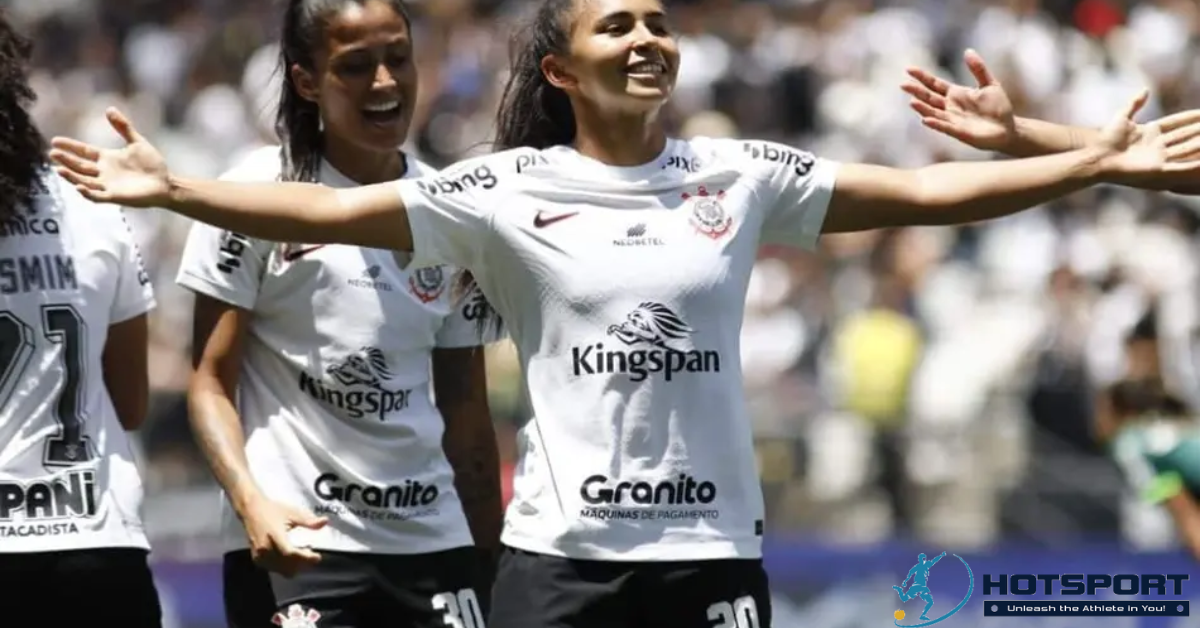Campeonato Paulista de Futebol Feminino: History, Impact, and Highlights
The Campeonato Paulista de Futebol Feminino (Paulista Women’s Football Championship) is one of the most significant competitions in Brazilian football, establishing itself as a milestone in the development of women’s football in São Paulo. Organized by the São Paulo Football Federation (FPF), the tournament brings together traditional clubs and emerging talents, fostering the growth of the sport and inspiring generations of athletes. This article explores the history, memorable moments, challenges, and cultural impact of the championship, highlighting its relevance in the Brazilian sports landscape.
1. Origins and Evolution of the Paulista Women’s Championship
1.1. The Early Days of Women’s Football in São Paulo
Women’s football in Brazil faced decades of prejudice and prohibitions. Until 1979, women were legally barred from playing football, under the argument that the sport was incompatible with “feminine nature.” Despite this, informal women’s matches occurred as early as the 1920s, often viewed as curiosities or mocked. In São Paulo, records indicate women’s games since the 1920s, but it was not until 1987 that the first official edition of the Campeonato Paulista Feminino took place, with Juventus-SP emerging as champions.
This pioneering edition marked the beginning of a struggle for legitimacy in women’s football. Though modest in its initial organization, the tournament paved the way for traditional clubs like Corinthians, Palmeiras, Santos, and São Paulo to invest in women’s teams.
1.2. Revival and Consolidation of the Tournament
After interruptions in 2002 and 2003, the Campeonato Paulista Feminino returned to the calendar in 2004, with a record 32 participating teams, including clubs, universities, and municipal teams. Since then, the competition has been held annually, gaining increasing visibility and professionalism. From 2021, the format was modernized: teams compete in a single group in the first phase, with the top four advancing to the semifinals and final, played over two legs.
The tournament’s evolution reflects the growth of women’s football in Brazil, with increasing club investments, FPF support, and greater media coverage. Today, the Paulista Feminino serves as a showcase for players aiming for spots in national competitions, such as the Brasileirão Feminino, and even the Brazilian national team.
2. Format and Structure of the Championship
2.1. Current Tournament Organization
The 2025 Campeonato Paulista Feminino, for example, features eight clubs, including giants like Corinthians, Palmeiras, Santos, São Paulo, Ferroviária, Red Bull Bragantino, Taubaté, and Realidade Jovem. The competition runs from May to December, with a first phase where teams face each other in a double round-robin format. The top four teams advance to the semifinals, while teams ranked 5th to 8th compete in the Copa Paulista Feminina, a parallel tournament that expands opportunities for clubs.
Semifinals and finals are played over two legs, with the team with the best first-phase campaign earning the advantage of hosting the second leg. Additionally, the championship offers qualification spots for the Brasileirão Feminino A3, depending on team performance and the FPF’s national ranking.
2.2. The Divisão Especial and Taça Paulistana
Since 2022, the FPF introduced the Divisão Especial, a sort of state-level second division, to foster the development of women’s football in smaller clubs. In its debut edition, six teams competed, with Ska Brasil defeating Pinda on penalties in the final. In 2024, the Divisão Especial was replaced by the Taça Paulistana de Futebol Feminino, which continues to encourage local community participation in the sport.
These initiatives demonstrate the FPF’s commitment to expanding the reach of women’s football, providing opportunities for less traditional clubs and promoting the inclusion of new athletes in the competitive scene.
3. Clubs and Historic Titles
3.1. The Biggest Champions
The Campeonato Paulista Feminino is dominated by two giants: Corinthians and Santos, each with four titles, tied as the competition’s most successful clubs. Santos won in 2007, 2010, 2011, and 2018, while Corinthians triumphed in 2019, 2020, 2021, and 2023. Other notable champions include:
- São Paulo: Champions in 1997 and 1999.
- Ferroviária: Titles in 2004, 2005, and 2013.
- Juventus-SP: Winner of the inaugural edition in 1987.
- Portuguesa: Champion in 2000, defeating Palmeiras in the final.
Palmeiras, the 2022 champion, has also emerged as a rising force in São Paulo’s women’s football scene.
3.2. Individual Highlights
The Paulista Feminino has showcased major talents over the years. In 2023, Victória Albuquerque of Corinthians was the tournament’s top scorer, netting 10 goals in 15 matches. In 2022, Santos’ icon Cristiane led the scoring charts with 19 goals, showcasing the strength of the Sereias da Vila (Santos’ women’s team). These figures highlight the high technical level of the competition and the ability of its players to shine on both state and national stages.
4. Social and Cultural Impact
4.1. Empowering Women in Peripheral Communities
Women’s football in São Paulo goes beyond sport, serving as a tool for empowerment, particularly in peripheral communities. Women from vulnerable areas find in football a way to confront challenges like domestic violence, early pregnancy, and lack of opportunities. A notable example is Ana, a Black player who migrated from Bahia to São Paulo at 20 to pursue her football dream. In 1999, she was recognized as a community figure in her neighborhood, a milestone she attributes to her dedication to the sport.
Initiatives like the Taça Paulistana and Divisão Especial amplify this impact, enabling women from diverse backgrounds to access the sport and gain visibility through football.
4.2. Challenges and Prejudice
Despite progress, women’s football still faces barriers. For decades, the notion that “football is for men” permeated Brazilian culture, as exemplified by former coach João Saldanha’s mockery of women in the sport. In 2001, the Campeonato Paulista Feminino faced criticism for adopting discriminatory criteria, such as requiring players to have long hair and “feminine” bodies.
While such practices have been abandoned, prejudice persists, and investment in women’s football, though growing, remains lower than in men’s football. The FPF and clubs are working to change this landscape, with initiatives like live broadcasts on YouTube (via the Paulistão channel) and partnerships with sponsors.
5. Memorable Moments of the Championship
5.1. The 2000 Final: Portuguesa vs. Palmeiras
In 2000, Portuguesa won the title by defeating Palmeiras in the final, in an edition featuring two groups of six teams, semifinals, and a single-match final. This triumph highlighted Portuguesa’s strength at a time when women’s football was still fighting for recognition.
5.2. Corinthians vs. São Paulo: A Modern Rivalry
The rivalry between Corinthians and São Paulo has heated up the Paulista Feminino in recent years. In 2023, Corinthians defeated São Paulo in the final, overcoming a 2-1 loss in the first leg. This matchup reflects the intensity and technical balance between the two clubs, which continue to draw large crowds and elevate the competition’s level.
5.3. Record Attendance in 2022
In 2022, over 20,000 fans attended the final between Palmeiras and Santos, a milestone for São Paulo’s women’s football. Palmeiras won 1-0 in the first leg and secured the title, solidifying their rise in the sport. This significant turnout demonstrates the growing interest in the tournament and the potential of women’s football to attract large audiences.
6. Future Perspectives
6.1. Investment and Professionalization
The future of the Campeonato Paulista Feminino is promising but depends on continued investment. Clubs like Corinthians, Palmeiras, and São Paulo have invested in professional structures, including dedicated training centers and formal contracts for athletes. The FPF also plays a crucial role by promoting competitions like the Taça Paulistana and the Paulista Under-20, which develop young talents, such as Aninha Hansen, the 2025 Under-20 top scorer with three goals.
6.2. Expanding Visibility
Game broadcasts on YouTube and coverage on platforms like Globo Esporte have increased the championship’s visibility. The expectation is that, with more sponsors and media support, the Paulista Feminino will reach an even larger audience, establishing itself as a reference in South American women’s football.
6.3. Inclusion and Diversity
The tournament must continue to promote inclusion. The participation of smaller city clubs, like Taubaté and Realidade Jovem, underscores the importance of democratizing access to women’s football. Additionally, initiatives to combat sexism and encourage diversity in the sport are essential for its sustainable growth.
Conclusion
The Campeonato Paulista de Futebol Feminino is more than a sports competition: it is a symbol of resistance, empowerment, and social transformation. From its first edition in 1987 to the present day, the tournament has overcome challenges, showcased talents, and inspired women across São Paulo. With historic clubs, thrilling rivalries, and significant cultural impact, the Paulista Feminino continues to pave the way for a more inclusive and equitable future in Brazilian football. May future editions continue to celebrate the talent of its players and the passion of its fans, solidifying the tournament as a pillar of national sport.



